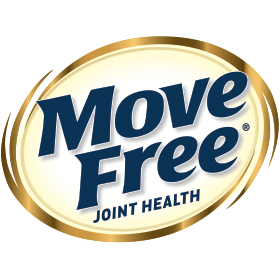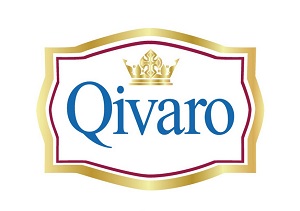
Is there a link between constant migraine headaches and stroke?
Besides the excruciating pain, migraines may also cause other symptoms.Cardiovascular crisisWho should be careful?
How painful is a migraine attack? Some sufferers describe it as: "a dull ache," "a constant throbbing," a throbbing sensation, a feeling that the head is about to explode or split open; or because of swelling around the eyes, the pain is so intense that it feels like "my eyes are about to pop out," and some even bang their heads against the wall in pain. When the pain strikes, it's as intense as a strong pulse pounding in the brain, a truly agonizing experience for both body and mind.
This has also caused concern among many people, who wonder if their bodies can handle it and whether an even bigger internal storm is about to follow.
Dr. Wang Shu-Chun, Chairman of the Taiwan Headache Society and Director of the Department of General Neurology at Taipei Veterans General Hospital, said that patients often ask him worriedly in his clinic: "Will I have a myocardial infarction, coronary artery disease? Will I have a stroke?"
Some studies have confirmed that patients' anxiety is not unfounded, especially for patients with "typical migraines" who have warning signs before a migraine attack, who need to be particularly careful.
According to foreign research, aura-induced migraines account for approximately [a certain percentage] of all [cases/symptoms].MigraineWang Shu-jun pointed out that 30% of patients with migraines have symptoms of aura; while in Taiwan, about 20% of patients with aura-induced migraines have symptoms of aura.
If we estimate based on his previous research that about 1.5 million people in Taiwan suffer from migraines, then at least 300,000 people may experience symptoms such as seeing stars, flashes of light, or curved lines before they have a headache.
In mid-2007, a study published in the Journal of the American Medical Association, which followed more than 27,000 women over the age of 45 for 10 consecutive years since the early 1990s, found that if a woman had a migraine with warning signs, her risk of developing cardiovascular disease was 2.15 times higher than normal; her risk of stroke was 1.91 times higher; and her risk of myocardial infarction was 2.08 times higher.
During the study, the group of participants experienced 580 serious coronary cardiovascular events, such as heart attacks, strokes, and angina, and 130 of them died as a result.
Interestingly, the study, which targeted caregivers, published its first results in its sixth year. At that time, it was found that headaches did not increase the risk of cardiovascular disease; however, in its tenth year, a completely different result was found, which surprised the researchers and caused a sensation.
Meanwhile, researchers from Brigham and Women's Hospital in Boston and Harvard School of Public Health also found that even after taking age into account, 18 out of every 10,000 women each year still have cardiovascular disease that is directly related to aura migraines.
Pregnancy is a joyous occasion, but…
In addition, generally speaking, when a woman is pregnant, the secretion of female hormones in her body increases, and she is less likely to experience migraines. However, if a woman experiences migraines during pregnancy, she should pay attention.
In early May 2007, at the annual meeting of the American Neurological Association in Boston, Bushnell, a researcher from the Center for Cerebrovascular Diseases at Duke University Medical Center, reported that women who experienced migraines during pregnancy were significantly more likely to have a stroke, heart attack, or other cardiovascular disease.
This study examined the discharge records of nearly 17 million pregnant women in the United States between 2000 and 2003, of whom approximately 34,000 had received treatment for migraines.
The study found that compared to other pregnant women, those who received treatment for migraines during pregnancy were 19 times more likely to have a stroke, 5 times more likely to have a heart attack, and more than twice as likely to have heart disease, blood clots, or other vascular complications. Additionally, women who gave birth after the age of 35 were also more prone to migraines during pregnancy.
Although the study authors acknowledged that this study does not prove a causal relationship between migraines and cardiovascular disease, but only found a correlation, further in-depth research is needed. They also noted the current lack of good indicators to help doctors identify which migraine patients are at higher risk. However, Lipton, a professor of neurology and epidemiology at Albert Einstein College of Medicine, cautioned, "People with migraines should treat them as a medical problem as important as diabetes or high cholesterol; they should all be addressed to improve their quality of life and prevent future complications."
He also advised that people with migraines should actively seek treatment, maintain a normal weight, and treat high blood pressure in order to correct risk factors that could lead to heart disease and stroke.
The Hidden Killer of Young Men
Men are not immune either. In late April 2007, a large-scale follow-up study published in the American journal "Archives of Internal Medicine," involving more than 20,000 male physicians aged 40 to 84 and averaging 15.7 years, indicated that men with migraines were more likely to have heart attacks than men without migraines.
When these participants initially joined the study, none of them had heart disease, cancer, or serious health conditions. During the first five years of the study, 1,449 people reported experiencing migraines; during the follow-up period, a total of 2,236 events related to heart disease or stroke occurred.
Compared with other male subjects without a history of migraines, men with migraines had a 24% increased risk of cardiovascular disease, with a 42% increased risk of myocardial infarction.
Men with migraines are also more prone to stroke, but this is age-related. Younger men under 55 years old have an 84% increased risk of stroke if they have migraines. However, the increased risk is not significant and does not reach statistical significance for older men with migraines.
Despite some skepticism following the publication of this study, Wang Shujun cautioned that migraine with aura is linked to cardiovascular disease. Although fewer men suffer from migraines than women, the proportion of men with migraines experiencing aura is higher than that of women. Male migraine sufferers should be vigilant.
Taking his headache survey in Greater Taipei conducted in 1997-1998 as an example, among every 1,000 people who experience migraines at least once a year, only about 45 were men (4.5%) and 144 were women (14.4%). However, among every 100 male migraine sufferers, 24 had warning signs, while among every 100 female migraine sufferers, only 9 had warning signs.
"Men should consider migraines as a risk factor (for cardiovascular disease)," Wang Shujun urged.
Headache Myths
However, people who suffer from migraines don't need to be overly anxious or create unnecessary worries for themselves.
For example, Wang Shujun is often asked by patients during his consultations, "Will the pain cause a stroke?"
"The answer is 'almost never,' very, very rarely," Wang Shujun pointed out. Only 6 out of every 1000 stroke patients (0.6%) experience migraines leading to stroke, especially those with "migraine infarction" where migraine aura symptoms last more than an hour and CT or MRI scans show stroke lesions. It's worth noting that migraine attacks directly causing strokes are more common in patients with migraines that have aura symptoms.
Even though the proportion of young stroke patients under the age of 45 who suffer from migraines is slightly higher (37 out of every 1,000 young stroke patients, or 3.7%), Wang Shujun still emphasized that the probability of this happening is still rare. "Don't be overly anxious and think that you will suffer from pain and have a stroke."
On the other hand, although 27% of stroke patients experience headaches, this is mainly due to a prior history of headaches; or strokes of the back of the head, especially cerebellar strokes; or younger stroke patients are more likely to experience headaches at the time of the stroke.
Moreover, headache is rarely the only symptom of stroke. If there are other signs of stroke (such as limb weakness, numbness or paralysis in one hand or foot) along with headache, there is more concern about the risk of stroke or transient ischemic attack. Otherwise, if there is only headache, the chance of stroke is very low.
However, Wang Shujun also cautioned that research has found that people who experience frequent migraine attacks (more than once a month) are more prone to small ischemic lesions in the brain, even if they have no history of stroke. In particular, migraine sufferers with auras have a 13.7 times higher risk of having ischemic or infarct lesions detected on brain imaging compared to those without auras. It is recommended that migraine sufferers with auras, regardless of whether they have had a stroke, consult their doctor and undergo brain imaging if their attacks are frequent to detect asymptomatic stroke sites early.
You can do this
In 2000, the World Headache Society established guidelines for migraine sufferers on how to prevent stroke, including:
◆ For migraine sufferers to prevent stroke, the first step is to be aware of any warning signs.
◆If you frequently experience migraines with warning signs, avoid taking medications like ergotamine, which are used to treat migraines but can cause vasoconstriction. Discuss medication adjustments with your doctor.
◆Reduce other risk factors for stroke, including not smoking, not drinking alcohol, and not taking female birth control pills. People who frequently experience headaches or migraines with auras, or whose headaches are becoming more frequent or whose auras are prolonged, should especially avoid taking birth control pills.
Wang Shujun also reminded that men who experience migraines may have an increased risk of cardiovascular disease. They should have regular health checkups to check for conditions such as high blood pressure, diabetes, and high cholesterol. Avoiding smoking and limiting alcohol consumption are also important, as is adjusting one's lifestyle to reduce stress. Excessive stress can easily trigger headaches, and frequent, chronic headaches can increase the risk of stroke and cerebral ischemia.
Migraine sufferers should avoid medications that cause vasoconstriction (such as ergot alkaloids), and should also limit their use of over-the-counter painkillers, as this can also raise blood pressure. If headaches are frequent, avoid relying solely on painkillers; instead, take headache preventative medications regularly to reduce the frequency of attacks. Some headache preventative medications can also lower high blood pressure, such as beta-blockers, which are also beneficial to the heart, Wang Shujun reminds.
In addition, he suggested that migraine sufferers who seek medical attention for other cardiovascular problems should proactively inform their doctors of their migraine history so that their medication can be adjusted. He noted that migraine sufferers often experience worsened headaches when taking unsuitable cardiovascular medications.
For example, commonly used "vasodilators" in clinical practice include drugs for preventing cardiovascular diseases such as Persantin (Chinese drug names such as Xin Kang Ning Ding, Bei Zhen Xin Ding, and Weinuo Xin) and Aggrenox (Chinese drug name such as Nao Kang Ping), which contain the ingredient Dipyridamole (Chinese drug name: Dai Pi Li Da). "(After patients take it,) the blood vessels dilate, and they often experience excruciating pain," said Wang Shujun.
Another class of angina medications containing nitrates, including Isordil, Ismo-20, and Imdur, often exacerbate headaches in many patients. (One-Minute Medical Lesson)
What is aura migraine?
Have you ever had a headache so bad that you felt like vomiting, so bad that you wanted to rest, or so bad that you were afraid of light? If two or more of these three symptoms apply to you, you may have a migraine. Wang Shu-jun, chairman of the Taiwan Headache Society, provides this quick test method.
As for aura migraines, these are specific and "recoverable" neurological symptoms that precede the headache, usually lasting about 20 minutes.
The Mayo Clinic's "Mayo Headache Encyclopedia" states that visual disturbances are the most common warning sign of migraines, such as seeing stars, colorless bright spots, flashes of light, curved lines or shapes, expanding blind spots in the visual field, blurred or hazy vision, etc. Other possible warning signs include tingling or numbness in the skin, weakness in the limbs, or speech difficulties such as slurred speech or inability to understand others.
Related Post:
Related Products:
-
Webber Naturals – Triple Strength Omega-3 (900mg EPA / DHA) 200 capsules Value Pack
Original price was: $398.00.$280.00Current price is: $280.00. Add to basket -
Kirkland Signature – Omega-3 Concentrated Deep Sea Fish Oil Pills 1300mg 330 Capsules
Original price was: $350.00.$298.00Current price is: $298.00. Add to basket -
GNC – Triple Super Fish Oil Mini Capsules 240 Capsules
Original price was: $298.00.$245.00Current price is: $245.00. Add to basket -
Sale!
 Out of stock
Out of stock
Swisse – Ultiboost Odorless High Concentration Wild Fish Oil 1500mg 400 Capsules
Original price was: $298.00.$220.00Current price is: $220.00. Add to basket







































































